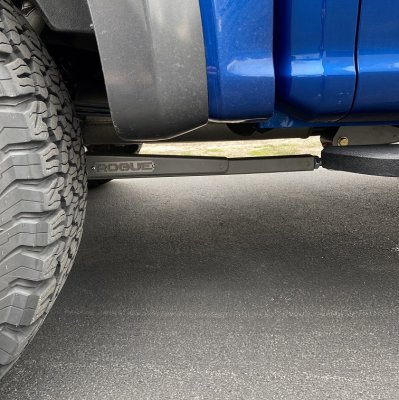CR Gittere
Full Access Member
Our requirements behind this system;
#1 Maintain original paths of motion, or maintain the intended path of the axle housing during movement.
#2 Redirect forces applied under acceleration to benefit the entire vehicle
#3 Keep pinion angle dictated by the leaf springs.
A few major advantages gained from our execution of this product;
#1 Adds front traction during acceleration, by taking the force that would wrap the spring and in turn lifting up on the rear of the cab.
#2 Keeps the front suspension out of compression by utilizing the same lift under acceleration to lighten the front end of the truck during compression.
#3 Makes the loss of traction, oversteer, feel more consistent and responsive.
All in all these are a better investment than aftermarket rear leaf springs as the OEM knew what they did when it comes to spring rate and operation. These work great with all aftermarket spring manufacturers.
Look all you need to do is read the marketing on their website and that will end this discussion LOL
#1 Maintain original paths of motion, or maintain the intended path of the axle housing during movement.
#2 Redirect forces applied under acceleration to benefit the entire vehicle
#3 Keep pinion angle dictated by the leaf springs.
A few major advantages gained from our execution of this product;
#1 Adds front traction during acceleration, by taking the force that would wrap the spring and in turn lifting up on the rear of the cab.
#2 Keeps the front suspension out of compression by utilizing the same lift under acceleration to lighten the front end of the truck during compression.
#3 Makes the loss of traction, oversteer, feel more consistent and responsive.
All in all these are a better investment than aftermarket rear leaf springs as the OEM knew what they did when it comes to spring rate and operation. These work great with all aftermarket spring manufacturers.
Look all you need to do is read the marketing on their website and that will end this discussion LOL



